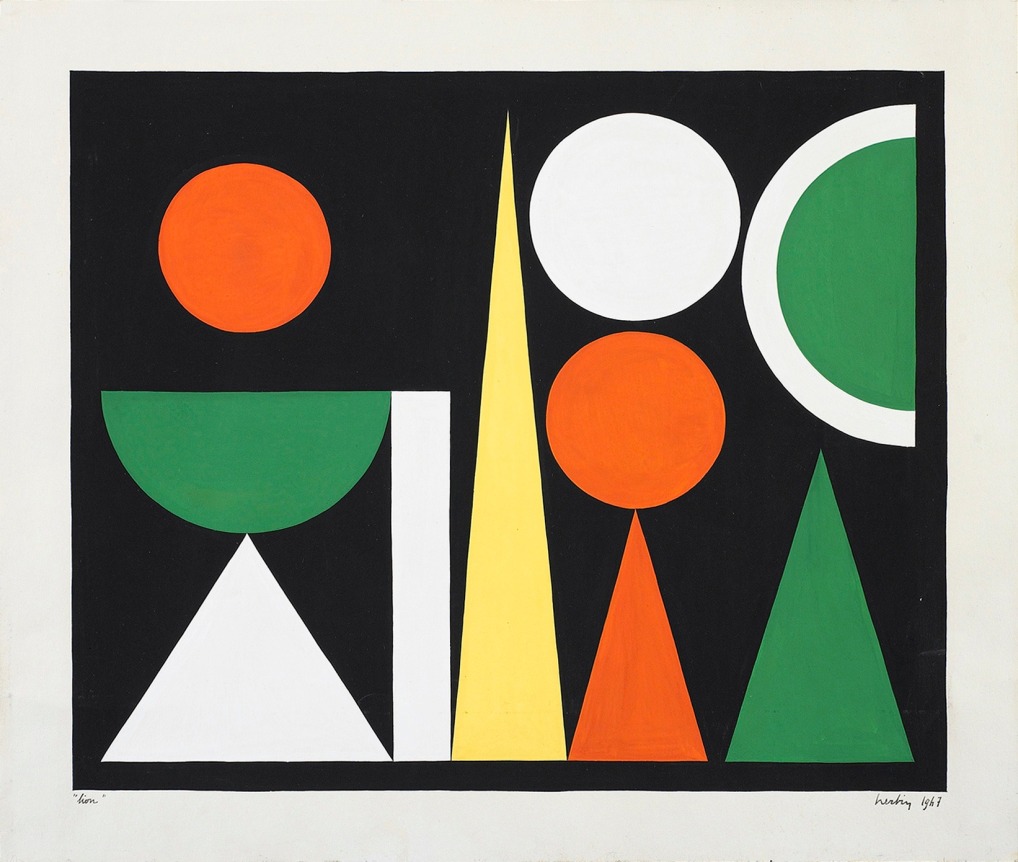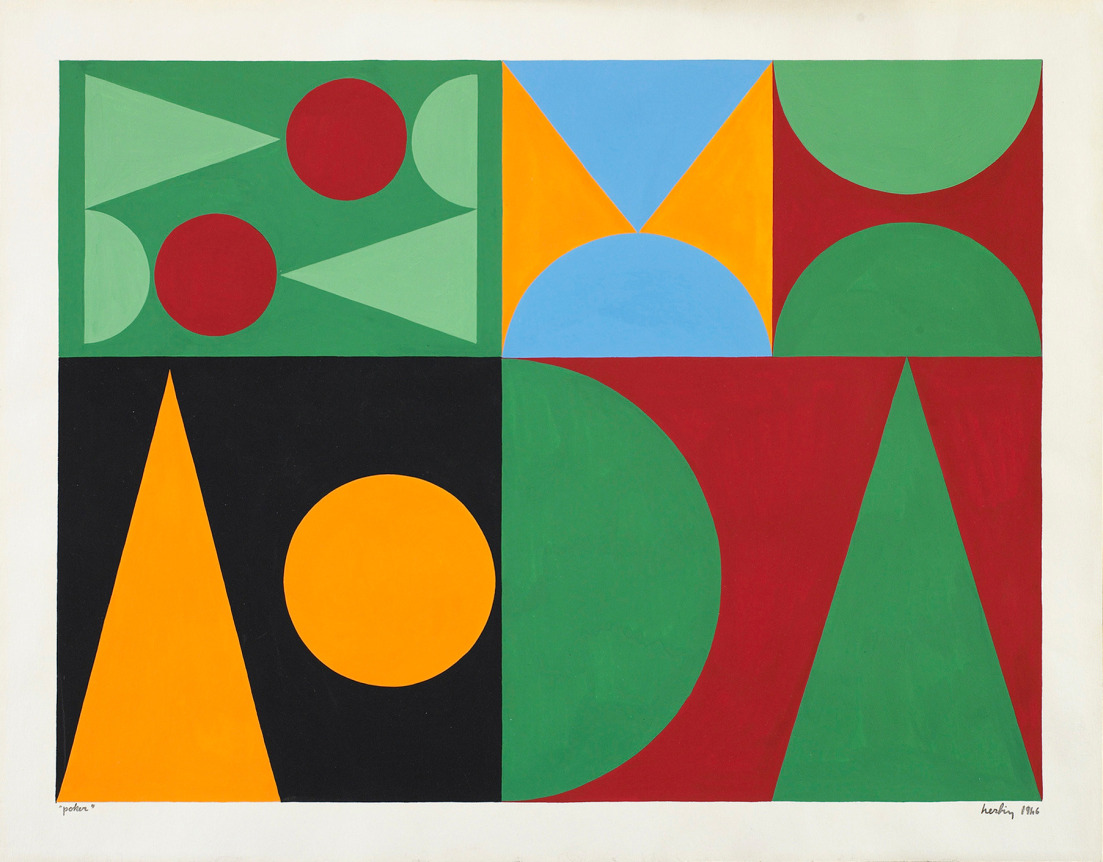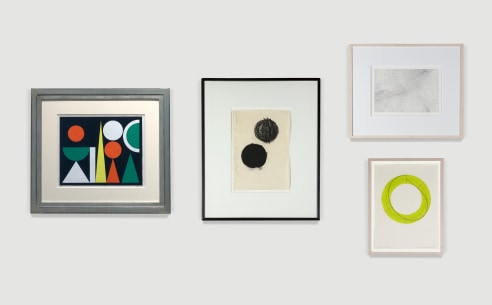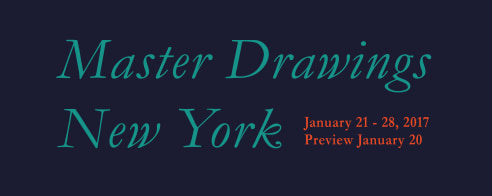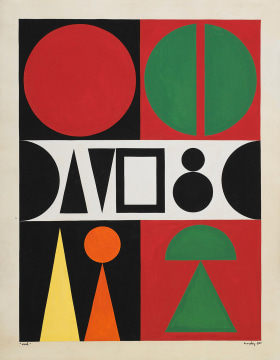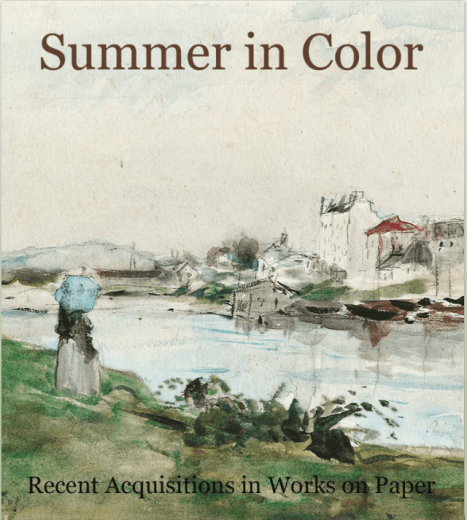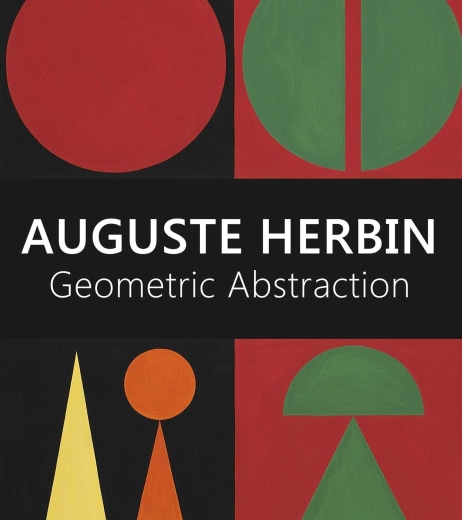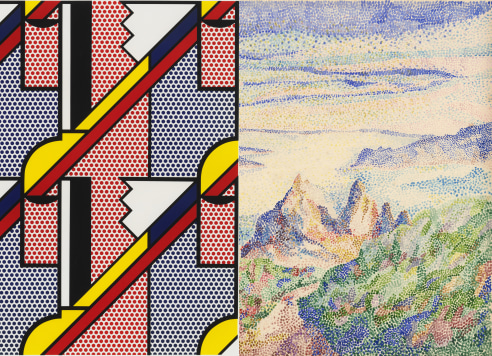
Auguste Herbin (1882-1960) was a leading figure in the development of geometric abstraction in Europe. He began as a Fauve, showing with Matisse and Derain at the Salon des Indépendants in 1906. In 1909 he moved to the Bateau Lavoir, where he met Picasso, Braque and Gris. By 1910, Herbin’s colorful geometric cubist works were shown beside paintings by Leger, Gleizes, and Metzinger. In 1918, the renowned dealer Léonce Rosenberg gave him a solo exhibition in at the Galerie l’Effort Moderne. In 1931, Herbin’s commitment to abstraction and non-objective art culminated in his founding, with de Stijl artist Vantongerloo, the wide-ranging Abstraction-Création Group and in 1949 to his publication of L’art non-figuratif non-objectif. The latter included Herbin’s formulation of his “Plastic Alphabet,” a system of correspondences between geometric shapes, colors, letters, and musical notes. This universal language animates the vibrant oil paintings and gouaches of Herbin’s mature period (c. 1945-1960), in which hard-edged triangles, rectangles and circles of pure, unmodulated color are distributed in registers that organize the picture field. Pictorial structure and vivid color become inseparable. Herbin influenced a wide range of artists and sculptors working in geometric abstract idioms from the 1940s through 1970. Artists as diverse as Victor Vasarely and Jean Tinguely have claimed Herbin’s works as inspirations for their own, and recent investigations into post-war European geometric abstraction show renewed interest in Auguste Herbin’s role.

